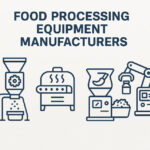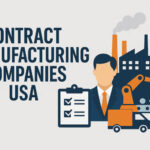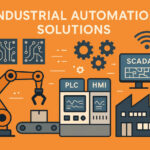3D printing, also known as additive manufacturing, is transforming the way we design, prototype, and produce parts. Once viewed primarily as a tool for rapid prototyping, it has matured into a powerful manufacturing technology capable of creating final-use products across various industries.
In this article, we explore how 3D printing is used in manufacturing, its benefits, limitations, and how UK businesses can leverage it to improve speed, flexibility, and cost-efficiency.
What Is 3D Printing in Manufacturing?
3D printing is a process where material is deposited layer by layer to build a physical object from a digital file (typically a CAD design). Unlike traditional subtractive methods like CNC machining, which remove material from a block, additive manufacturing builds objects from the ground up—reducing waste and allowing for more complex geometries.
Types of 3D Printing Used in Manufacturing
Several 3D printing technologies are widely used in industrial manufacturing:
1. Fused Deposition Modelling (FDM)
- Uses thermoplastic filaments (e.g., ABS, PLA, PETG)
- Cost-effective and suitable for basic prototypes and jigs
2. Stereolithography (SLA)
- Uses a laser to cure liquid resin
- Offers high-resolution, smooth-surfaced parts
3. Selective Laser Sintering (SLS)
- Fuses powdered nylon using a laser
- Great for functional prototypes and end-use parts
4. Direct Metal Laser Sintering (DMLS)
- Produces metal components from powdered metals (e.g., aluminium, titanium)
- Used in aerospace, automotive, and medical applications
5. Multi Jet Fusion (MJF)
- Fast production of high-strength nylon parts
- Ideal for low to mid-volume manufacturing
Benefits of 3D Printing in Manufacturing
1. Rapid Prototyping
Speed up product development by printing functional prototypes within hours or days instead of weeks.
2. Design Flexibility
Produce complex geometries that are difficult or impossible to make using traditional methods, such as lattice structures and undercuts.
3. Cost-Efficiency for Low Volumes
Avoid the high upfront cost of tooling for injection molding or casting. Ideal for low to medium batch runs.
4. On-Demand Production
Eliminate the need for large inventories. Parts can be printed as needed, reducing warehousing costs.
5. Sustainability
Additive manufacturing reduces material waste and enables the use of recyclable or bio-based materials.
Common Industrial Applications
| Industry | Applications |
|---|---|
| Aerospace | Lightweight components, ducting, brackets |
| Automotive | Custom fixtures, replacement parts, tooling |
| Healthcare | Implants, dental models, surgical guides |
| Consumer Goods | Wearables, packaging prototypes, toys |
| Architecture | Scale models, interior design elements |
| Industrial | Jigs, fixtures, end-of-arm tooling |
Cost Considerations
While 3D printing has a reputation for affordability, costs vary based on:
- Material used (plastic, resin, metal)
- Print technology
- Size and complexity
- Finishing and post-processing
For example:
- Small plastic prototype (FDM): ~£10–£50
- Medium functional nylon part (SLS): ~£50–£200
- Metal aerospace bracket (DMLS): £300+
However, when you factor in savings from tooling, lead time, and revisions, 3D printing can be highly cost-competitive for short runs and complex designs.
Limitations of 3D Printing
- Surface Finish: May require post-processing for smooth finishes.
- Speed: Slower than injection molding for high volumes.
- Material Range: Limited compared to traditional methods.
- Mechanical Properties: Some printed parts are not as strong as machined or molded counterparts.
Despite these, improvements in materials and technology are closing these gaps quickly.
UK-Based 3D Printing Services and Providers
Here are some trusted UK providers offering industrial 3D printing:
- 3DPRINTUK – Specialists in SLS for production parts.
- Laserlines Ltd – Offers Stratasys and Formlabs solutions.
- Hobs 3D – Great for architectural and product models.
- AdditiveX – Supplies machines and contract manufacturing.
- AME Group – End-to-end support from prototyping to production.
Many of these companies offer online quoting and design consultation services.
When to Choose 3D Printing for Manufacturing
Consider 3D printing when:
- You need fast iteration and prototyping
- Your part has complex geometry
- Production volume is low to mid-scale (10–5,000 parts)
- You want to reduce tooling costs
- You’re exploring custom or personalised products
Future Outlook
3D printing is increasingly being integrated into Industry 4.0 strategies. With advances in automation, digital twins, and material science, its use in mass customisation, spare parts on demand, and even supply chain decentralisation is growing.
By 2030, experts predict additive manufacturing could represent up to 20% of global production, particularly in high-value industries like aerospace and healthcare.
Related Keywords for SEO
- Industrial 3D printing UK
- Additive manufacturing for production
- Rapid prototyping services UK
- Custom 3D printed parts for manufacturing
- FDM vs SLS for low-volume production
- DMLS metal printing UK
Final Thoughts
3D printing for manufacturing is no longer just a tool for engineers and hobbyists—it’s a practical, scalable solution for businesses seeking faster time to market, lower production costs, and design freedom.
As materials, processes, and machine capabilities continue to evolve, 3D printing will play an even more significant role in reshaping the way we manufacture everything from consumer electronics to medical implants.
Would you like me to create an infographic or visual image for this article as well?






